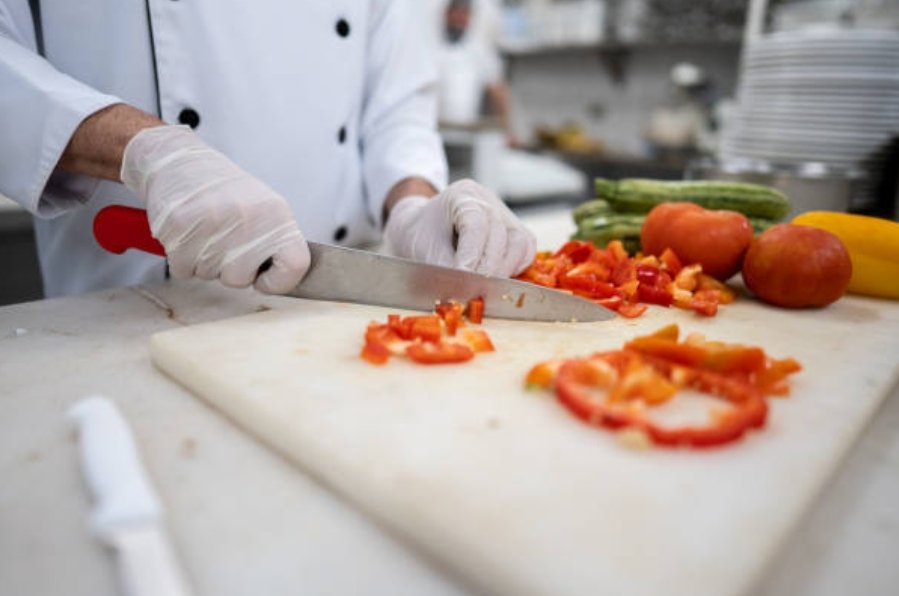Japanese knives have earned a prestigious reputation among professional chefs worldwide for their exceptional quality, craftsmanship, and performance. From the sushi chef in Tokyo to the fine dining chef in New York, Japanese knives are often the go-to tool in kitchens that demand precision and efficiency. But what exactly makes Japanese knives so highly regarded in the culinary world? In this article, we’ll explore the reasons why professional chefs prefer Japanese knives.
1. Unparalleled Sharpness
One of the primary reasons professional chefs favor Japanese knives is their remarkable sharpness. Japanese knives are renowned for their ability to hold an incredibly fine edge, which is achieved through traditional sharpening techniques. The edge of a Japanese knife is typically sharpened at a much steeper angle than that of a Western knife. While Western knives often have an angle of around 20 degrees, Japanese knives are commonly sharpened to a much finer angle of 10 to 15 degrees, resulting in a sharper edge.
This sharpness allows chefs to make precise, clean cuts, which is particularly important when working with delicate ingredients like fish or vegetables. When slicing through ingredients, a Japanese knife can cut with minimal resistance, ensuring that the food retains its integrity and doesn’t get squished or torn. This level of sharpness also reduces the risk of injury, as the blade glides effortlessly through the food rather than requiring force.
2. Superior Craftsmanship and Materials
Japanese knives are crafted using some of the finest materials available, which contributes to their superior performance. Traditional Japanese knife-making techniques, such as those practiced in the cities of Seki and Sakai, have been perfected over centuries. Many Japanese knives are made using high-carbon steel, which holds an edge much longer than stainless steel and is easier to sharpen.
The process of forging the blade often involves folding the steel multiple times, which increases its density and strength. This method, called “folding,” creates a blade that is not only incredibly sharp but also resilient and durable. For those who prefer stainless steel, Japanese knives are often made using a combination of hard steel for the edge and softer steel for the spine, creating a blade that is both strong and flexible.
3. Lightweight and Ergonomic Design
Another key advantage of Japanese knives is their lightweight design and ergonomic handles. Unlike many Western knives, which tend to be heavier and bulkier, Japanese knives are crafted to be lighter and more balanced. This makes them easier to handle for extended periods, reducing fatigue during long hours of prep work in the kitchen.
The lightweight design also makes it easier to execute precise, controlled cuts, allowing chefs to work more efficiently. Additionally, the handles of Japanese knives are often ergonomically designed, with a shape that fits comfortably in the hand. Many Japanese knives feature a traditional “wa” (Japanese) handle, which is made of wood and provides a secure, natural grip. This design allows for greater control and minimizes the risk of slippage during use.
4. Specialization for Specific Tasks
Japanese knives are often designed with specific culinary tasks in mind, making them ideal for specialized use. For example, the Santoku knife is a versatile all-purpose knife that excels at chopping, slicing, and dicing, while the Deba knife is designed specifically for filleting fish. The Yanagiba knife, which is long and narrow, is perfect for making precise, thin cuts of fish for sushi.
This specialization allows chefs to select the perfect knife for each task, ensuring optimal performance and efficiency in the kitchen. The diversity of Japanese knives means that chefs can rely on the right tool for the job, rather than trying to make a single knife work for everything.
5. Long-Lasting Durability
Japanese knives are built to last, making them a worthwhile investment for professional chefs. Due to their superior materials and construction methods, Japanese knives can maintain their sharpness for an extended period of time, even with heavy daily use. While they may require occasional sharpening, the durability of Japanese knives means they can withstand years of rigorous use in a professional kitchen.
Additionally, because Japanese knives are often made using high-carbon steel or high-quality stainless steel, they resist corrosion better than many other knives. This makes them suitable for use with a wide range of ingredients, including acidic foods like tomatoes or citrus, without the risk of the blade rusting or becoming discolored.
6. Cultural Tradition and Precision
For many chefs, using a Japanese knife is not just about performance—it’s also about the cultural tradition and precision associated with the knives. The art of Japanese knife-making is deeply rooted in centuries-old practices, and many chefs appreciate the history and craftsmanship that go into every blade. The meticulous process of forging and sharpening these knives gives them a unique sense of artistry and craftsmanship that chefs admire and respect.
In addition, the precision of Japanese knives aligns with the philosophy of Japanese cooking, which emphasizes attention to detail, balance, and aesthetics. A Japanese knife allows chefs to achieve the level of precision required for these delicate culinary practices, making it an essential tool for dishes that require intricate cuts and presentation.
Conclusion
Japanese knives have earned their place as a favorite among professional chefs due to their exceptional sharpness, craftsmanship, ergonomic design, and specialized functionality. These knives offer a unique combination of beauty, precision, and performance that make them invaluable tools in the kitchen. Whether it’s the superior sharpness that allows for delicate, clean cuts, or the lightweight design that offers greater control, Japanese knives continue to be a preferred choice for chefs who demand the best in their culinary endeavors.






